

Year-Round Gardening Techniques for Cold Climates
Introduction
Gardening in cold climates can feel like a game of survival. Temperatures drop, snow falls, and your plants shiver in the frost. But fear not, green thumbs! The challenges of cold climate gardening also present unique opportunities to cultivate a year-round garden. Imagine harvesting fresh greens while others are shoveling snow.
Extending your growing season is crucial for maintaining productivity. With the right techniques, tools, and plant choices, your garden can thrive despite the chill. This article uncovers effective methods to keep your garden alive and kicking, regardless of the season. From innovative structures to resilient plants, we’ll cover everything you need to know to transform your cold climate gardening experience. And to get you started, consider a Cold Frame Gardening Kit to extend your season!
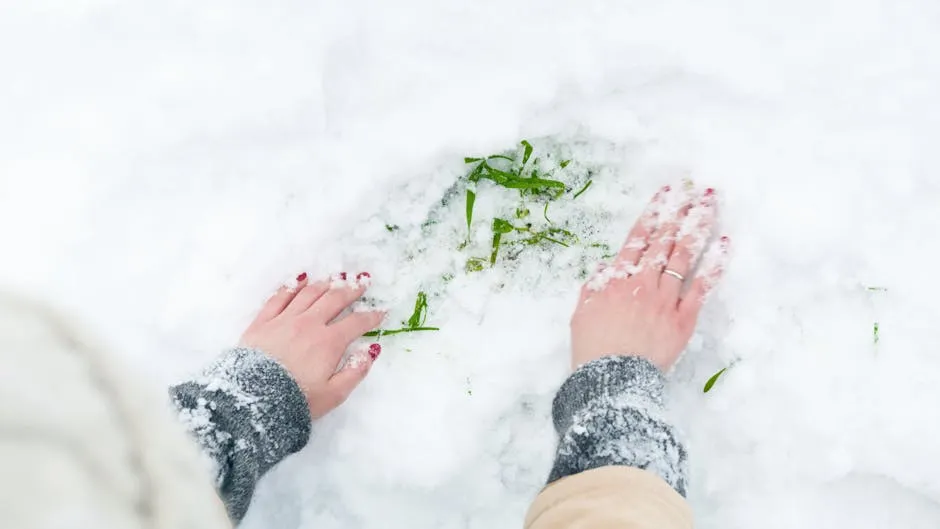
Understanding Cold Climates
The Importance of Knowing Your Zone
Every gardener should familiarize themselves with USDA Hardiness Zones. These zones help identify which plants can thrive in your specific climate. Knowing your zone allows you to choose suitable crops that can withstand harsh winter conditions. For instance, if you’re in zone 3, forget about those tropical tomatoes; your best bet lies with cold-hardy vegetables.
Additionally, understanding local frost dates is vital. These dates tell you when to plant and when to harvest. By planning around your region’s unique climate patterns, you increase your chances of a successful harvest. Remember, those frosty mornings are not just a winter wonderland; they’re a warning for your plants! And to help you monitor those conditions, a Weather Station with Sensors can be invaluable!
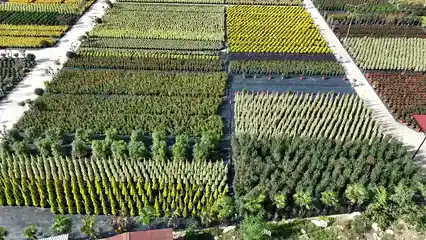
Key Challenges in Cold Climate Gardening
Cold climates come with their own set of gardening hurdles. Short growing seasons mean less time for plants to mature. Plus, unpredictable weather can throw a wrench in your plans. One day it’s sunny, and the next, you’re battling frost.
However, acknowledging these challenges can help in planning. Knowing when your last frost date is allows you to start seeds indoors early. Understanding your climate helps you select crops that can withstand the chill. With careful planning and strategic planting, you can turn these challenges into opportunities for year-round gardening success. Embrace the cold, and let your garden flourish! For effective seed starting, consider using Seed Starting Trays!
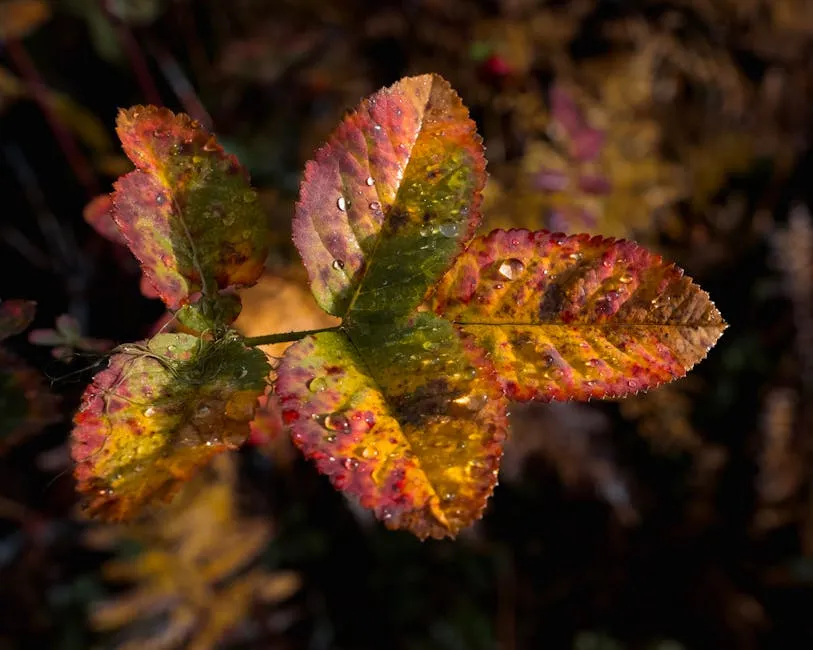
Techniques for Year-Round Gardening
Utilizing Cold Frames
What is a Cold Frame?
A cold frame is a simple yet effective structure designed to protect plants from harsh winter conditions. It’s essentially a bottomless box with a transparent top, allowing sunlight to pour in while keeping the cold at bay. Picture it as a cozy blanket for your plants! Typically, the back of the frame is taller than the front, which helps capture more sunlight. This design creates a microclimate that can be up to 10 degrees warmer than the outdoor environment.
Building a cold frame is a great DIY project. You can use materials like old windows, wood, or even PVC pipes. The key is to ensure it’s sturdy and well-ventilated. You want your greens to bask in the sun, not roast on a sunny day! The cold frame allows you to grow cold-tolerant crops like kale, spinach, and carrots, extending your gardening season significantly. And for those who prefer a more organized approach, check out this Portable Greenhouse!

Benefits of Cold Frames
Cold frames offer numerous benefits that make them a gardener’s best friend. First and foremost, they extend your growing season. Imagine harvesting fresh salad greens in December while your neighbors are shoveling snow!
Cold frames protect plants from harsh weather elements like wind, snow, and frost. They create a stable environment, allowing for a more controlled growth rate. Plus, they save you money on heating costs if you’re using them in conjunction with other structures.
Using a cold frame also allows you to start seeds earlier in the spring. You can plant cool-weather crops weeks before the last frost date. You’re not just gardening; you’re gardening smart! And let’s not forget the satisfaction of enjoying homegrown veggies during the winter months. Enhance your cold frame gardening experience with a Organic Fertilizer for Vegetables to keep your plants nourished!

How to Build and Use a Cold Frame
Building a cold frame is easier than you might think! Here’s a simple guide to get you started:
1. Gather Materials: You’ll need wood planks for the frame, transparent panels (like glass or plastic), hinges, and screws.
2. Construct the Frame: Cut the wood into a rectangular shape. Make the back side taller than the front for optimal sunlight capture. Assemble the frame using screws for stability.
3. Attach the Top: Secure the transparent panels to the top of the frame using hinges. This allows you to open it for ventilation on sunny days.
4. Position the Cold Frame: Place your cold frame in a sunny spot, preferably facing south. This maximizes sunlight exposure.
5. Plant and Monitor: Fill the frame with soil and plant your cold-hardy crops. Monitor the temperature inside, especially on sunny days, and open it to prevent overheating.
By following these steps, you’ll create a cozy habitat for your plants, enabling year-round gardening even in the coldest climates. Don’t forget to label your plants with Plant Labels for easier identification!

Greenhouses and Hoophouses
Types of Greenhouses
Greenhouses come in various shapes and sizes, each serving a unique purpose. You can choose from freestanding, attached, or portable options.
Freestanding greenhouses are standalone structures that offer plenty of space for all your gardening needs. They provide a controlled environment where you can grow a variety of plants year-round.
Attached greenhouses are connected to your home, utilizing heat from your living space. This setup can lower heating costs while still offering a warm haven for your plants.
Portable greenhouses are lightweight and easy to move. They are perfect for gardeners with limited space or those wanting flexibility. You might want to check out this Mini Greenhouse Shelving Unit for better organization!
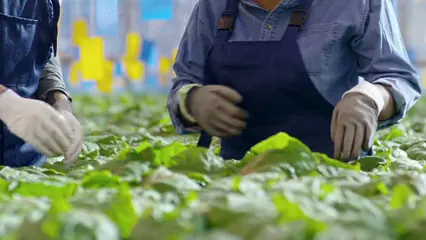
Passive Solar Greenhouse Design
Designing a passive solar greenhouse harnesses the sun’s energy, reducing your reliance on external heating sources. The key elements include orientation, thermal mass, and ventilation.
Position your greenhouse to capture maximum sunlight, ideally facing south. Using materials like concrete or water barrels inside helps retain heat during cold nights. These materials absorb warmth during the day and release it at night, providing a stable temperature for your plants.
Ensure your greenhouse has adequate ventilation, especially in the warmer months. Opening windows or vents allows hot air to escape, preventing overheating. With the right design, you can cultivate a thriving garden all year, regardless of the frost outside.
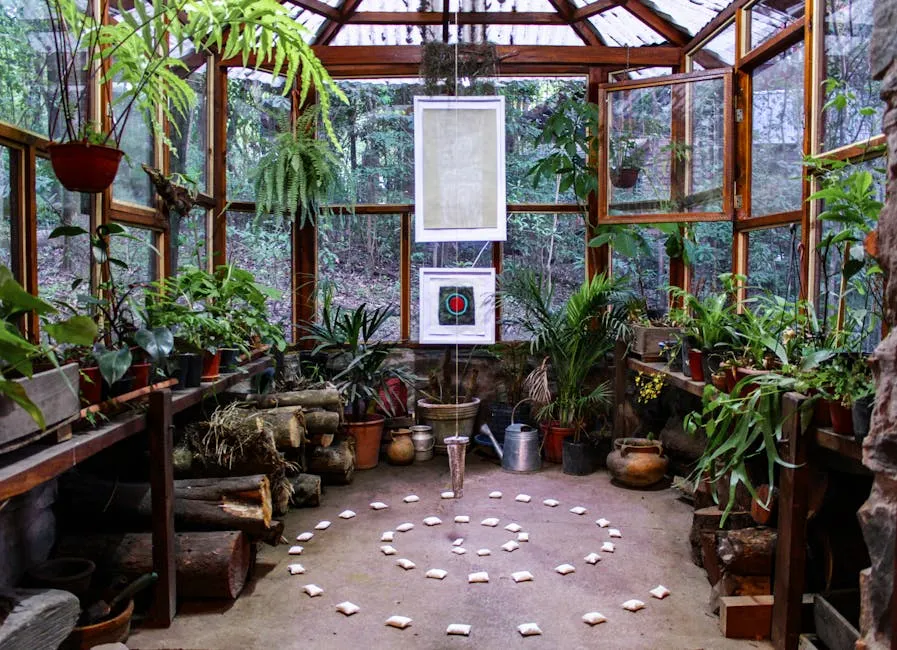
Managing Temperature and Ventilation
Proper temperature and ventilation management are crucial for a successful greenhouse. Start by monitoring the temperature regularly—ideally, it should stay between 70°F and 80°F during the day and slightly cooler at night.
On sunny days, the greenhouse can heat up quickly. Use automatic vent openers to regulate airflow or manually open vents when necessary. Shade cloths can also be used to cool down the temperature during intense sun.
Don’t forget to water your plants regularly, as greenhouses can dry out quickly. With these tips, you’ll create an optimal environment for your plants, ensuring they flourish no matter the season. And for those who want to keep their plants well-fed, consider Plant Food Spikes for a nutrient boost!
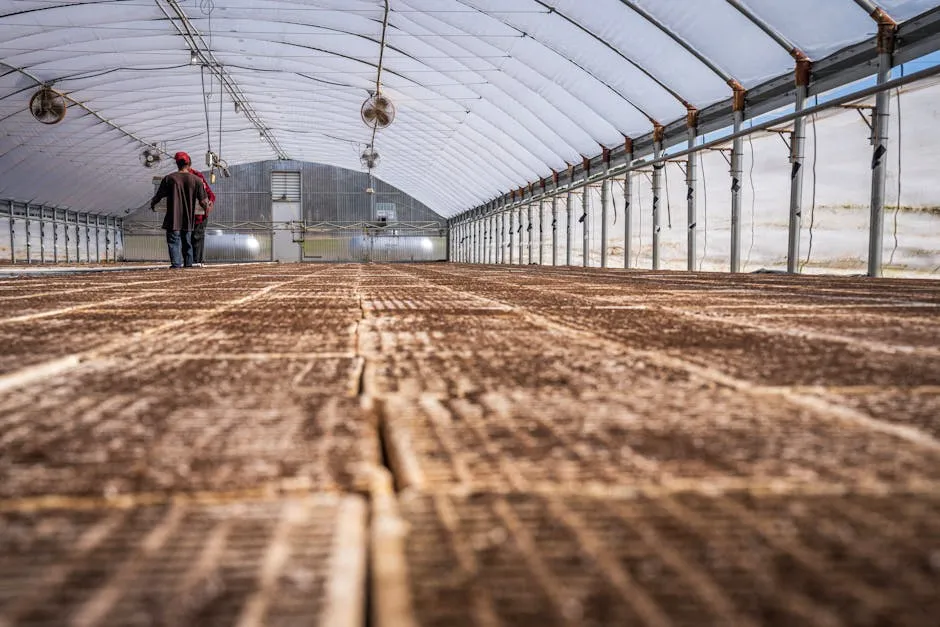
Low Tunnels and Row Covers
What are Low Tunnels?
Low tunnels are like mini greenhouses for your garden. They consist of hoops covered with plastic or fabric, creating a protective enclosure for your plants. These structures can significantly extend your growing season, especially in cold climates. Think of them as cozy blankets for your veggies!
The benefits? First, low tunnels trap heat, keeping the temperature inside warmer than the outside. This can be a game changer on chilly nights. By creating a microclimate, they allow you to plant earlier in the spring and harvest later in the fall. For cold-hardy crops like kale, spinach, and radishes, low tunnels are a boon. They thrive in the warmth and protection, producing delicious greens even when snow is on the ground.
Constructing low tunnels is straightforward. You can use PVC pipes or metal hoops to create the frame, then cover it with lightweight row cover fabric or plastic. Be sure to secure the edges to prevent wind from blowing them away! Regularly check the conditions inside. Too much heat can be just as detrimental as cold, so you might need to vent them on sunny days. With a little effort, low tunnels can keep your harvest rolling all year long, turning your winter garden into a vibrant oasis. Speaking of protection, don’t forget to stock up on Row Cover Fabric!
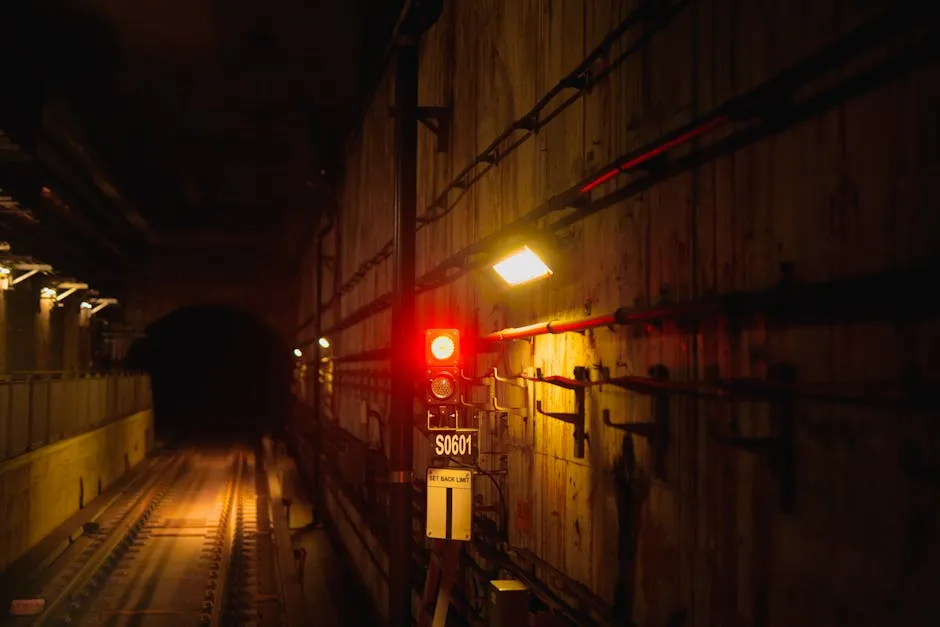
Using Row Covers for Protection
Row covers are like superhero capes for your plants. These lightweight fabrics protect crops from frost, harsh winds, and pesky pests. They allow sunlight and moisture to pass through while providing crucial insulation. Think of them as a protective shield that keeps your plants cozy and thriving!
To effectively use row covers, start by choosing the right fabric. Options include lightweight spun polyester or breathable plastic. For frost protection, ensure you cover your plants before temperatures drop. Secure the edges with soil, stones, or stakes to prevent the cover from blowing away.
Another trick? Use hoops or wire frames to elevate the cover above your plants. This prevents the fabric from directly touching foliage, allowing for better air circulation and reducing the risk of disease. Remember to monitor your crops regularly. On warmer days, it may be necessary to lift the cover to avoid overheating.
Row covers can be left in place throughout the season. They not only protect against frost but also extend the growing season. With the right setup, your plants can enjoy a fabulous winter, offering you a fresh harvest while others are stuck inside, dreaming of spring. And if you want to keep your plants thriving, consider a Compost Bin to enrich your soil!
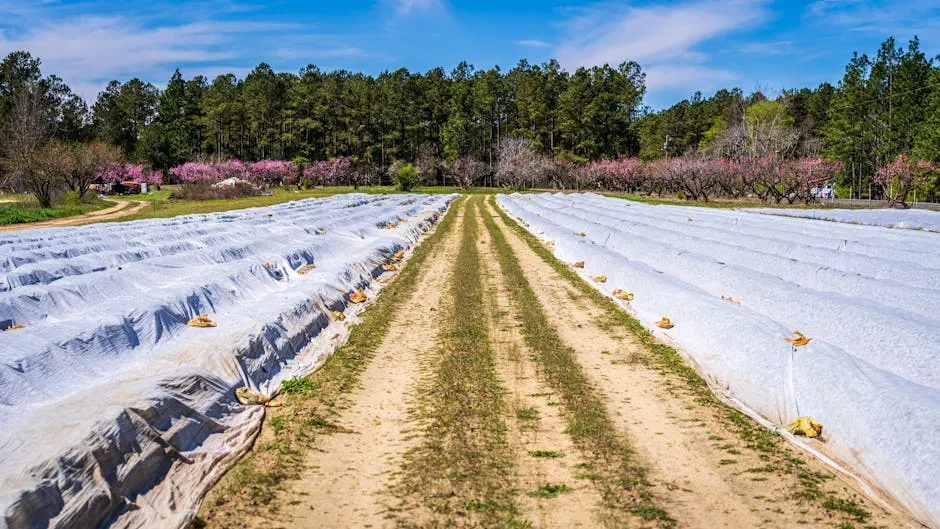
Root Vegetables
Root vegetables are the hidden gems of cold climate gardening. When temperatures drop, these underground treasures not only survive but often thrive. Carrots, beets, and parsnips have a unique ability to sweeten during colder months. Why? The cold temperatures prompt these veggies to convert starches into sugars. This transformation means you’ll enjoy sweeter, more flavorful produce right from your garden.
Imagine pulling a freshly harvested carrot from the ground, brushing off the dirt, and sinking your teeth into its crisp, sweet flesh. Delicious, right? Plus, root vegetables are hardy. They can withstand frost and even bounce back from a chilly setback. By planting them in late summer or early fall, you set yourself up for a winter harvest. To make the most of your harvest, a Soil Moisture Meter can help you monitor their needs!
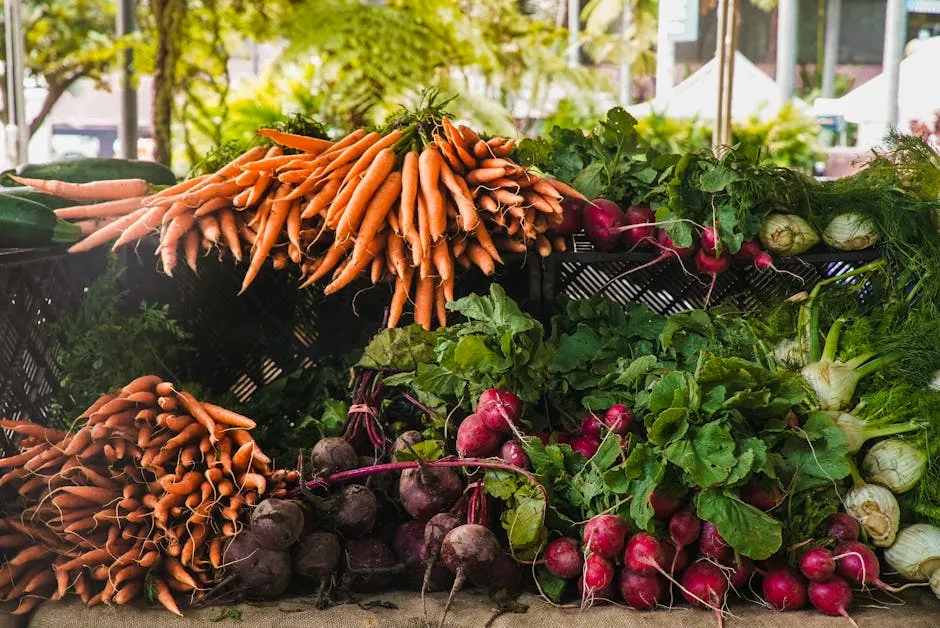
Herbs and Other Options
When it comes to cold climate gardening, certain herbs are ready to tackle the frost alongside you. Think of hardy herbs like thyme, rosemary, and parsley. These green warriors not only survive but can also add fresh flavors to your winter dishes.
Thyme, with its robust aroma, can withstand the chill and even enhance its flavor with frost. Rosemary, while not as cold-tolerant, can still thrive in sheltered spots. And let’s not forget about parsley. This versatile herb can be harvested throughout the winter, providing a pop of freshness to your meals.
Other options include chives, which add a mild onion flavor to your cooking, and mint, perfect for teas or desserts. These herbs can be grown in pots or directly in the garden, making them accessible no matter your space constraints. To keep your herb garden thriving, consider a Gardening Toolkit for all your needs!
Don’t shy away from experimenting with cold-hardy varieties of lettuce or even spinach. They can thrive in cooler temperatures and provide a delightful crunch to your winter salads. With the right choices, your cold climate garden can be a vibrant source of fresh flavors all year round!
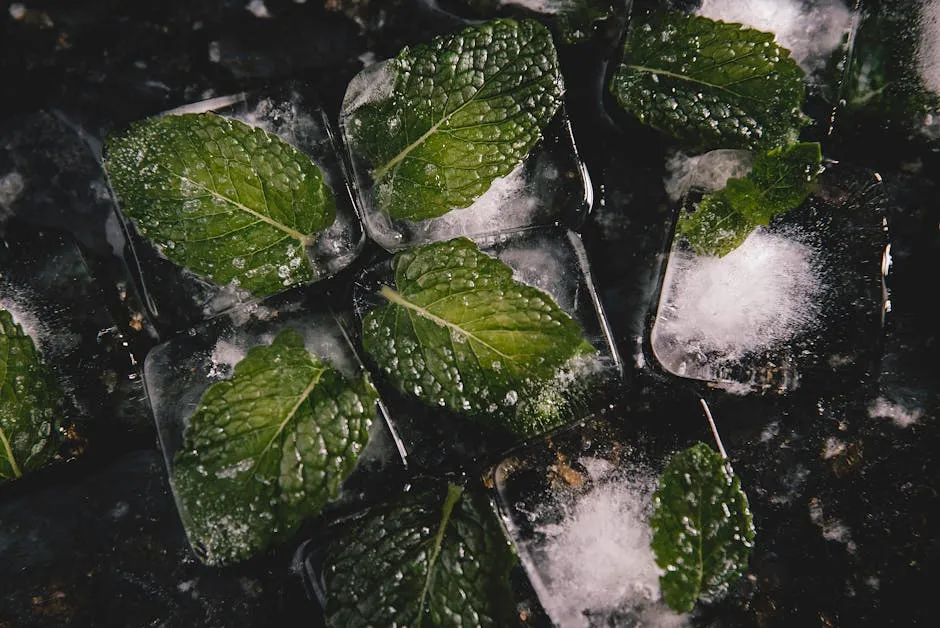
When to Sow and Plant
Timing is everything in cold climate gardening. Knowing when to sow and plant can make or break your harvest. Start by checking local frost dates. These dates will guide you in planning your garden schedule. Most gardeners aim to plant cool-season crops about 2-4 weeks before the last expected frost.
For example, if April 15 is your last frost date, aim to sow seeds indoors in late February or early March. Starting seeds indoors gives your plants a head start, allowing them to mature before outdoor conditions get too chilly.
Once the risk of frost has passed, you can transplant your seedlings outdoors. For late summer and fall crops, sow seeds in mid to late summer. This way, you can harvest before winter sets in. Remember, patience is key. Keep an eye on weather forecasts, and be ready to cover your plants if an unexpected frost threatens your harvest. For detailed guidance, a Vegetable Gardening Book can be incredibly helpful!

Crop Rotation and Succession Planting
Crop rotation and succession planting are vital strategies for maximizing your garden’s productivity. By rotating crops each season, you prevent soil depletion and reduce pest and disease issues. This practice helps maintain soil health, ensuring your plants receive the nutrients they need. Implementing permaculture principles for sustainable gardening can enhance these practices further.
Understanding crop rotation is essential for maintaining soil health and maximizing yields. Understanding crop rotation for healthier vegetables
Succession planting, on the other hand, allows you to stagger your crops for continuous harvests. For instance, after harvesting early spring greens, replant that space with a late-season crop like kale or turnips. This method ensures you’re not left with empty garden beds and can enjoy fresh produce throughout the growing season. To keep track of your planting, a Gardening Journal can be a game changer!
Implementing these strategies requires a bit of planning but pays off with a bountiful harvest. Keep a garden journal to track what you’ve planted and when. This way, you can develop a rotation plan and ensure your garden remains productive all year. Embrace these techniques, and your cold climate garden will flourish!

Mulching and Organic Amendments
Mulching is a gardener’s secret weapon in cold climates. It’s like a warm blanket for your plants! Organic mulch, such as straw, wood chips, and leaves, helps retain soil moisture and regulate temperature. This is crucial during those frosty nights when the ground can freeze.
Start by applying a thick layer of mulch around your plants. Aim for about 3-4 inches. This prevents soil from freezing solid and allows beneficial microorganisms to thrive. Plus, it keeps pesky weeds at bay. Who doesn’t love less weeding?
Organic amendments are another essential part of winter gardening. Compost is fantastic for enriching the soil. It adds nutrients while improving soil structure. Healthy soil means healthy plants, even in the cold. You can also use well-rotted manure or other organic fertilizers. These not only nourish your plants but also promote microbial activity, which is vital for nutrient uptake. And if you’re looking for an easy way to keep your soil healthy, consider using a Soil Test Kit!
Consider adding a layer of mulch after applying organic amendments. This combination creates an insulating layer that protects roots from extreme temperatures. Remember, the goal is to keep the soil temperature stable.
Using these techniques not only enhances your garden’s resilience but also helps in conserving moisture. In winter, every drop counts! So, layer on that mulch and organic goodness, and watch your garden thrive, even when Jack Frost is nipping at your nose.
Watering and Nutrient Needs
As seasons change, so do your garden’s needs. In cold climates, watering and nutrients require careful adjustments. During winter, plants consume less water. However, they still need hydration to survive. Check your soil regularly. If it feels dry, give it a drink!
Watering in the morning is ideal. This allows plants to absorb moisture before the sun gets too warm. It also prevents ice formation overnight, which can harm roots. Use a soaker hose or drip irrigation system to deliver water directly to the roots. This method minimizes evaporation and ensures efficient use of water. For a great drip irrigation solution, check out this Drip Irrigation Kit!
Nutrient needs shift as well. In late fall, your plants benefit from a nitrogen boost. This helps them maintain green foliage, even in the cold. Use organic fertilizers like blood meal or fish emulsion, which are gentle yet effective.
Come winter, focus on slow-release fertilizers. These provide a steady supply of nutrients without overwhelming your plants. It’s like a buffet instead of a feast!
For leafy greens and root vegetables, consider a light application of compost in early spring. This will jumpstart growth as temperatures rise. Balancing water and nutrients is key to keeping your garden healthy through the seasons.
Monitoring Weather Conditions
Staying one step ahead of Mother Nature is essential for cold climate gardeners. Modern technology offers fantastic tools to monitor weather conditions. Consider investing in a Weatherproof Storage Box to keep your gardening tools safe from the elements!
But don’t stop there! Smartphone apps also provide forecasts and alerts. This way, you’ll know when to cover your plants before an unexpected frost. Remember, it’s better to be safe than sorry!
When temperatures drop, use cloches or row covers to protect sensitive plants. These simple structures create a mini greenhouse effect. They trap warmth and shield plants from freezing winds. Just be sure to remove them on sunny days to prevent overheating.
Don’t forget to keep an eye on the soil moisture levels. Cold weather can dry out the ground faster than you think! Regularly check for dryness, and adjust your watering schedule accordingly.
Monitoring weather conditions not only protects your plants but also enhances your gardening experience. You’ll feel more in control and less at the mercy of unpredictable weather. With the right tools, you can cultivate a thriving garden, even in the chilliest conditions.
Conclusion
Year-round gardening in cold climates is not just a dream; it’s a delightful reality! By implementing techniques like mulching, using organic amendments, and adjusting care based on seasonal needs, you can cultivate a thriving garden even in the frostiest conditions. Remember, it’s all about creating a protective environment and knowing the right timing for your plants.
Embrace these strategies to enhance your gardening experience. Whether you’re savoring fresh greens in winter or planning for the next growing season, your hard work will pay off. So, gear up, explore local resources, and start planning your cold climate garden today. Don’t forget to light up your garden with Outdoor Garden Lights for those long winter nights!
Please let us know what you think about our content by leaving a comment down below!
Thank you for reading till here 🙂
All images from Pexels



